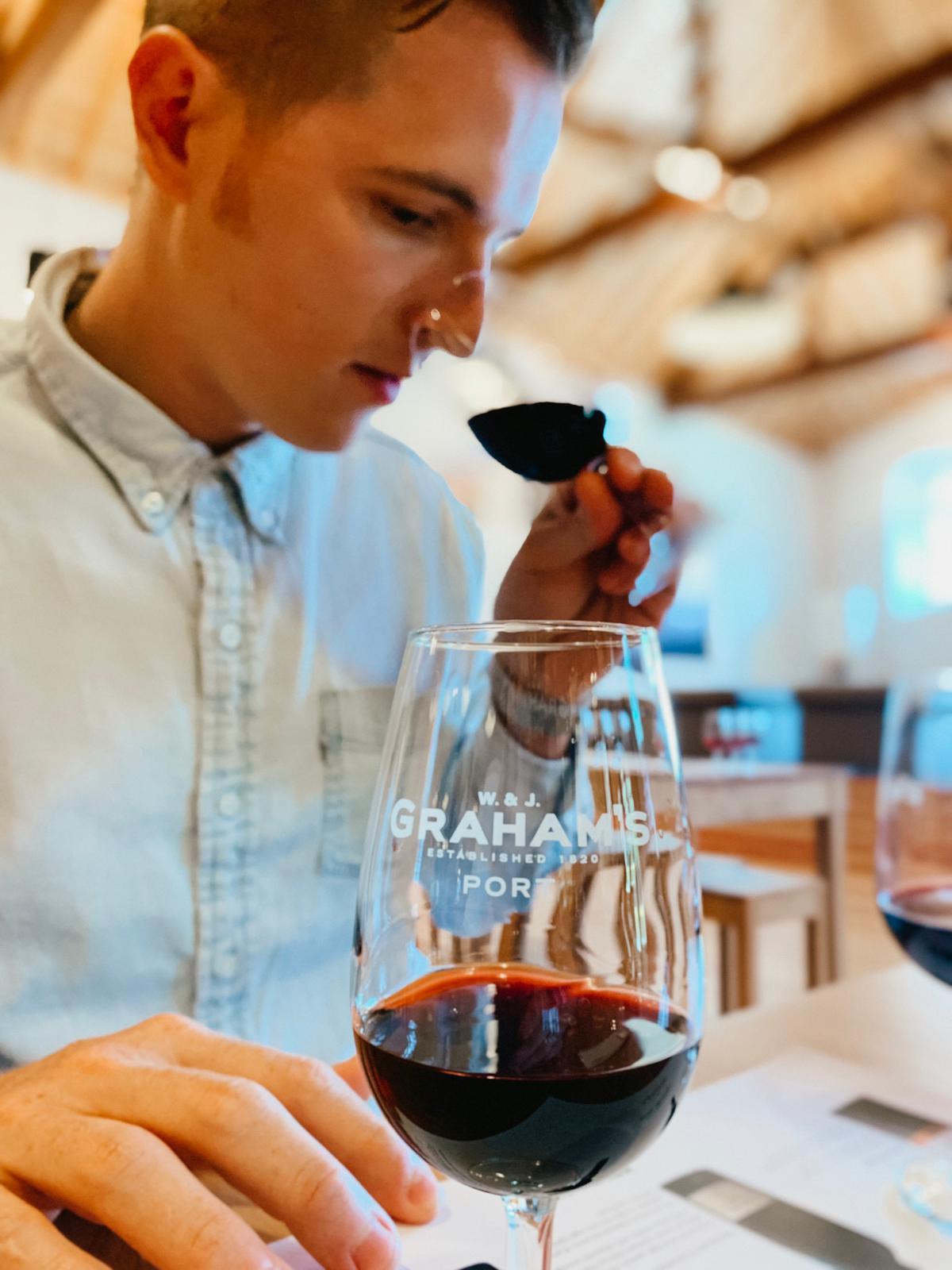 Earlier this year, I had the opportunity to visit Portugal for the first time. Not only did I fall in love with the people, food, and land, but also re-discovered the amazingness of Port wine.
Earlier this year, I had the opportunity to visit Portugal for the first time. Not only did I fall in love with the people, food, and land, but also re-discovered the amazingness of Port wine.
Port is a fortified wine, most of the times sweet, that is mistakenly thought of as a dessert wine. Yes, Port is usually sweet, but I learned that depending on the style, it is enjoyed at different times in a meal (I will get to that later).
The beginning of every Port starts in the Duoro Valley, about 200 miles inland from the city of Porto. There, grapes are grown in steep hillside terraces, in a very extreme climate with very warm summers and cold winters. There are over 100 native grape varieties allowed in Port wine production, but the main ones are Touriga Nacional, Touriga Franca, Tinta Roriz, Tinta Barroca, and Tinta Cao for reds, and Malvasia, Verdelho, and Sercial for white.
The grapes are harvested, delicately stomped, fermented for a short period of time (to keep residual sugar), fortified with a grape spirit, and then held to stabilize at the winery in the Douro Valley until the first winter after harvest passes. After this, the fortified wine is transported to the famous town of Vila Nova de Gaia, which is the town opposite from the city of Porto, separated by the Douro River. Here, is where all of the shipping houses (Graham’s, Taylor’s, Warren’s, etc.) age their Ports for years, decades, and sometimes, even centuries.

The ageing process and length depends on the style of port that will be made. The most basic distinction is Ruby and Tawny. Ruby port is aged for short periods of time, usually in large oak vats in order to minimize oak extraction and oxidation. The result is a very fruity, sweet wine that is usually enjoyed with cheeses and savory food. Keep in mind that a Ruby Port will only last about 3-5 days after the bottle is opened. Vintage and LBV (Late Bottle Vintage) are both types of Ruby Ports.
On the other hand, we have Tawny Port. This style is aged for long periods of time in smaller oak barrels that will allow the wine to slowly oxidize and transform. Tawny Ports always have a lighter (maroon-like) color, and will have aromas of toffee, caramel, burnt butter, and dried fruits. This style is usually enjoyed as a digestive, with desserts, or while smoking a cigar. Tawny Port is then labeled depending on the average age of maturation (10, 20, 30, or 40 years.) Fun fact, while I was visiting Graham’s, I learned that they are still ageing a Tawny Port from 1882! (Colheita Port is a type of Tawny, but it is from a single harvest year or vintage).

Lastly, while I was there, I learned that white Port also exists. This style varies from off-dry, light and refreshing, to a sweet, aged, and complex perfection. The off-dry, young style is usually drunk as a cocktail, mixed with tonic water, lemon, and ice, while the sweeter more complex style can be enjoyed with savory rich foods, or on its own after dinner.
Weather you are a Port fanatic or not, if you get a chance to visit the city of Porto and see for yourself the magic, history, and interesting methodology of Port winemaking, I encourage you to do so. Once you do this, Port is impossible not to love!



